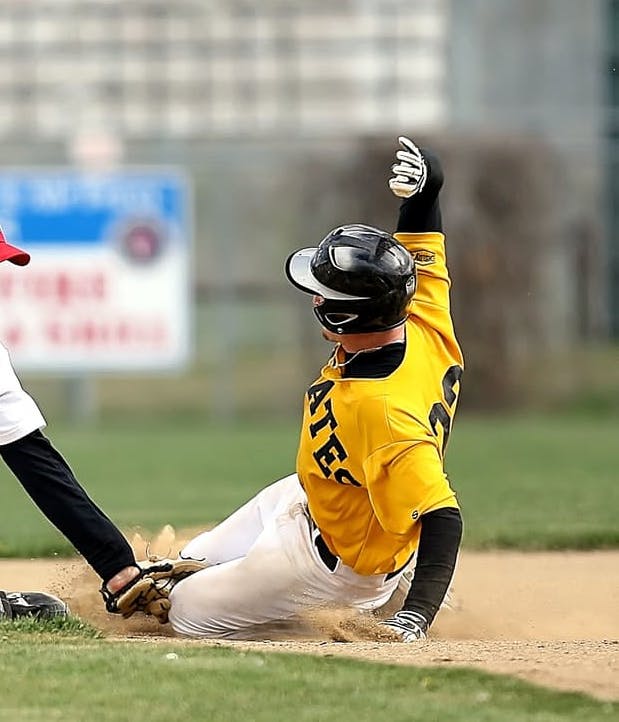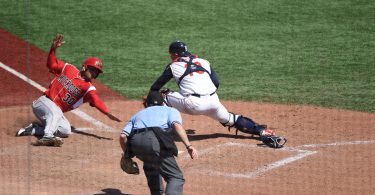The Situation:
There are runners on 1st and 3rd with 1 out in the bottom of the 9th. The offense is trailing 5-3 in front of their home crowd. The 4-hole hitter is up to bat and has a 2-1 count, and the crowd is starting to get into it.
The Play:
The batter gets a fastball to hit and puts a good swing on it. He’s just a tick too early, and gets under the ball, driving the center fielder back several steps for an easy catch. The sac fly is as sure a bet as the second out, but an unexpected sequence of events follows. As the ball is coming down towards the center fielder’s glove, the runner at 1st goes back to the bag to tag. The outfielder catches the ball and both runners start to tag. Knowing there was no play at the plate, the center fielder throws the ball into the cutoff man lined up to second. The tagging runner catches everyone by surprise. They suspect that he is bluffing, but he keeps going.
The Outcome:
Despite the initial shock, the relay-man delivers an easy, short throw to the covering shortstop and the runner’s attempt to avoid the tag is unsuccessful. He is tagged out easily and the game ends in a 5-4 victory for the visiting squad. Coaches and players from both teams are shocked by the unexpected and anti-climactic ending.
What Went Wrong:
This is a bizarre play, but believe it or not, it actually happened in a Power-5 Conference game. In fact, the runner who erred is now a Big Leaguer, so it’s fair to say he likely learned his lesson. You can learn an important lesson here too. Let’s start with the intent and strategy behind the initial decision to tag up at first, which was a heads-up play.
With the can-of-corn sac-fly almost certain to be caught, the runner’s attention turns to getting into scoring position with 2 outs. He knows that if the center fielder foolishly throws home, he can take second base easily, moving the tying run into scoring position. The entire catch and throw will be right in his face as well, so that’s an added benefit. That’s also where the execution and outcome go horribly wrong.
The runner can afford to tag up and take off for second base anticipating the outfielder error. Having the play in front of him makes it an easy read within the first few hard steps. If the ball is delivered to the cutoff man or even anywhere close to the second base vicinity, as it was in this situation, it becomes an easy read, react, and adjust situation. The only viable option is to shut it down and return to first base. As you can see, it’s far too risky to rely purely on the element of surprise and go without continuing to watch the play develop.
You don’t have to wait to be in this exact situation to think the game and apply this lesson to your game. The major lesson here is that as a base runner, you should always be reading the play and making adjustments. Anticipating the potential defensive error was great, that’s how you steal 90 feet. However, once the throw home didn’t happen, the runner at first should have adjusted accordingly. Remember as a base runner, your responsibilities are to anticipate taking an extra base, continue to read the play, react to the developing play and adjust accordingly. As a base runner who thinks the game at a college level, the words anticipate, read, react, and adjust should always be in the back of your mind and part of your tool set.







